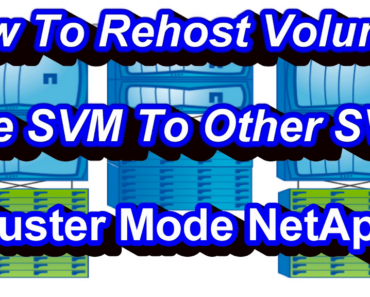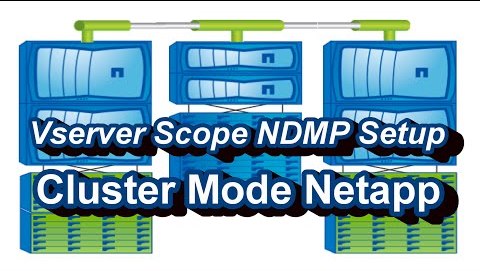In this blog, we will see what is Volume Rehost and how we can move a volume from one SVM to another SVM. As an example in the coming section, we will see the commands for volume move.

What is Volume Rehost in NetApp Cluster-Mode?
Volume rehost enables you to reassign flexible volumes from one storage virtual machine (SVM) to another SVM without requiring a SnapMirror copy.
Rehosting a volume is a disruptive operation for data access. Hence you should get a downtime from shareowner and then plan it.
Types Of Volume To Rehost
The volume rehost process depends upon the protocol and the volume type. Based on these, the steps to perform a volume move differ. Below is the brief summary for rehosting volume for different scenarios.
Rehosting CIFS volumes
You can rehost volumes that have CIFS shares. After rehosting the CIFS volume you must mount the volume and create a CIFS share in destination SVM.
Volume rehosts move NTFS ACL permission so no need to worry about permission issues.
Rehosting NFS volumes
You can rehost volumes that serve data over the NFS protocol. After rehosting the NFS volumes, you must mount the volume, create export policy and permission rules in destination SVM.
Rehosting SAN volumes
You can rehost volumes that have mapped LUNs. You must create the initiator group in the destination SVM. The volume automatically remaps the volume on the same SVM.
Rehosting volumes in a SnapMirror relationship
You can rehost volumes in a SnapMirror relationship. Before rehosting, you should delete the snap-mirror relationship. After rehosting the volume, you must create a peer relationship between source and destination SVM.
You should also create a new snap-mirror relationship and schedule it for Sync.
Pre Check For Volume Rehost
The volume must be online. Offline volume cannot be rehosted Volume management operations, such as volume move or LUN move, must not be running.
Data access to the volume must be stopped. Destination SVM Configuration must match with Source SVM.
Post Check Volume Rehost
After the rehost operation, the volume will lose some configuration such as Antivirus policies, efficiency policy, QOS, Snapshot policies, Quota rules, export policy and rules, User and group IDs.
If any of the above features were there for rehosting volume them you must create these in destination SVM as well.
You also need to mount the volume and create a new share. Good thing is that NTFS permission will be the same as it was in source SVM. Last thing is that you have to use destination SVM IP to access the shares.
Commands For Volume Rehost In NetApp Cluster Mode
- Record information about the CIFS shares to avoid losing information on CIFS shares in case volume rehost operation fails.
2. Unmount the volume In Source SVM
volume unmount -vserver vs1 -volume vol1
3. Switch to the advanced privilege level:
set -privilege advanced
4. Move the volume on the destination SVM:
volume rehost -vserver vs1 -volume vol1 -destination-vserver vs2
5. Mount the volume under the appropriate junction path in the destination SVM
volume mount -vserver vs1 -volume vol1 -junction-path /vol1
6. Create CIFS shares for the rehosted volume:
vserver cifs share create -share-name share1 -vserver vs1 -path /vol1
7. Point the DNS Host entry to the IP of New SVM
Check out the YouTube Video for rehosting a volume. This video has a live demo with a detail explanation. Subscribe to Channel for more such videos.



